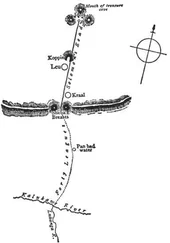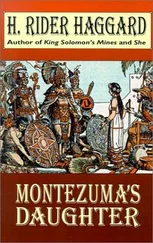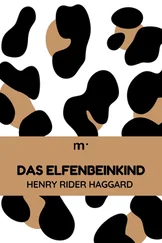Henry Haggard - She
Здесь есть возможность читать онлайн «Henry Haggard - She» весь текст электронной книги совершенно бесплатно (целиком полную версию без сокращений). В некоторых случаях можно слушать аудио, скачать через торрент в формате fb2 и присутствует краткое содержание. Жанр: Прочие приключения, на английском языке. Описание произведения, (предисловие) а так же отзывы посетителей доступны на портале библиотеки ЛибКат.
- Название:She
- Автор:
- Жанр:
- Год:неизвестен
- ISBN:нет данных
- Рейтинг книги:5 / 5. Голосов: 1
-
Избранное:Добавить в избранное
- Отзывы:
-
Ваша оценка:
- 100
- 1
- 2
- 3
- 4
- 5
She: краткое содержание, описание и аннотация
Предлагаем к чтению аннотацию, описание, краткое содержание или предисловие (зависит от того, что написал сам автор книги «She»). Если вы не нашли необходимую информацию о книге — напишите в комментариях, мы постараемся отыскать её.
She — читать онлайн бесплатно полную книгу (весь текст) целиком
Ниже представлен текст книги, разбитый по страницам. Система сохранения места последней прочитанной страницы, позволяет с удобством читать онлайн бесплатно книгу «She», без необходимости каждый раз заново искать на чём Вы остановились. Поставьте закладку, и сможете в любой момент перейти на страницу, на которой закончили чтение.
Интервал:
Закладка:
And that is the end of this history so far as it concerns science and the outside world. What its end will be as regards Leo and myself is more than I can guess at. But we feel that is not reached yet. A story that began more than two thousand years ago may stretch a long way into the dim and distant future.
Is Leo really a reincarnation of the ancient Kallikrates of whom the inscription tells? Or was Ayesha deceived by some strange hereditary resemblance? The reader must form his own opinion on this as on many other matters. I have mine, which is that she made no such mistake.
Often I sit alone at night, staring with the eyes of the mind into the blackness of unborn time, and wondering in what shape and form the great drama will be finally developed, and where the scene of its next act will be laid. And when that final development ultimately occurs, as I have no doubt it must and will occur, in obedience to a fate that never swerves and a purpose that cannot be altered, what will be the part played therein by that beautiful Egyptian Amenartas, the Princess of the royal race of the Pharaohs, for the love of whom the Priest Kallikrates broke his vows to Isis, and, pursued by the inexorable vengeance of the outraged Goddess, fled down the coast of Libya to meet his doom at Kôr?
1
This name is varied throughout in accordance with the writer’s request.— Editor .
2
The Strong and Beautiful, or, more accurately, the Beautiful in strength.
3
The Kallikrates here referred to by my friend was a Spartan, spoken of by Herodotus (Herod. ix. 72) as being remarkable for his beauty. He fell at the glorious battle of Platæa (September 22, B.C. 479), when the Lacedæmonians and Athenians under Pausanias routed the Persians, putting nearly 300,000 of them to the sword. The following is a translation of the passage, “For Kallikrates died out of the battle, he came to the army the most beautiful man of the Greeks of that day—not only of the Lacedæmonians themselves, but of the other Greeks also. He when Pausanias was sacrificing was wounded in the side by an arrow; and then they fought, but on being carried off he regretted his death, and said to Arimnestus, a Platæan, that he did not grieve at dying for Greece, but at not having struck a blow, or, although he desired so to do, performed any deed worthy of himself.” This Kallikrates, who appears to have been as brave as he was beautiful, is subsequently mentioned by Herodotus as having been buried among the ἰρένες (young commanders), apart from the other Spartans and the Helots.— L. H. H .
4
Nekht-nebf, or Nectanebo II., the last native Pharaoh of Egypt, fled from Ochus to Ethiopia, B.C. 339.— Editor .
5
The cartouche, if it be a true cartouche, cannot have been that of Kallikrates, as Mr. Holly suggests. Kallikrates was a priest and not entitled to a cartouche, which was the prerogative of Egyptian royalty, though he might have inscribed his name or title upon an oval .— Editor .
6
Another thing that makes me fix the date of this entry at the middle of the eighteenth century is that, curiously enough, I have an acting copy of “Hamlet,” written about 1740, in which these two lines are misquoted almost exactly in the same way, and I have little doubt but that the Vincey who wrote them on the potsherd heard them so misquoted at that date. Of course, the lines really run:—
There are more things in heaven and earth, Horatio,
Than are dreamt of in your philosophy.
— L. H. H .
7
Grocyn, the instructor of Erasmus, studied Greek under Chalcondylas the Byzantine at Florence, and first lectured in the Hall of Exeter College, Oxford, in 1491.— Editor .
8
There is a known species of magnolia with pink flowers. It is indigenous in Sikkim, and known as Magnolia Campbellii .— Editor .
9
Near Kilwa, on the East Coast of Africa, about 400 miles south of Zanzibar, is a cliff which has been recently washed by the waves. On the top of this cliff are Persian tombs known to be at least seven centuries old by the dates still legible upon them. Beneath these tombs is a layer of débris representing a city. Farther down the cliff is a second layer representing an older city, and farther down still a third layer, the remains of yet another city of vast and unknown antiquity. Beneath the bottom city were recently found some specimens of glazed earthenware, such as are occasionally to be met with on that coast to this day. I believe that they are now in the possession of Sir John Kirk.— Editor .
10
We found tobacco growing in this country as it does in every other part of Africa, and, although they were so absolutely ignorant of its other blessed qualities, the Amahagger use it habitually in the form of snuff and also for medicinal purposes.— L. H. H .
11
We afterwards learnt that its object was to pretend to the victim that he was the object of love and admiration, and so to sooth his injured feelings, and cause him to expire in a happy and contented frame of mind.— L. H. H .
12
Yárab the son of Kâhtan, who lived some centuries before the time of Abraham, was the father of the ancient Arabs, and gave its name Araba to the country. In speaking of herself as “al Arab al Ariba,” She no doubt meant to convey that she was of the true Arab blood as distinguished from the naturalised Arabs, the descendants of Ismael, the son of Abraham and Hagar, who were known as “al Arab al mostáraba.” The dialect of the Koreish was usually called the clear or “perspicuous” Arabic, but the Hamaritic dialect approached nearer to the purity of the mother Syriac.—L. H. H.
13
Pronounced Assha.— L. H. H .
14
I am informed by a renowned and learned Egyptologist, to whom I have submitted this very interesting and beautifully finished scarab, “Suten se Ra,” that he has never seen one resembling it. Although it bears a title frequently given to Egyptian royalty, he is of opinion that it is not necessarily the cartouche of a Pharaoh, on which either the throne or personal name of the monarch is generally inscribed. What the history of this particular scarab may have been we can now, unfortunately, never know, but I have little doubt but that it played some part in the tragic story of the Princess Amenartas and her lover Kallikrates, the forsworn priest of Isis.— Editor .
15
“The cave of torture.” I afterwards saw this dreadful place, also a legacy from the prehistoric people who lived in Kôr. The only objects in the cave itself were slabs of rock arranged in various positions to facilitate the operations of the torturers. Many of these slabs, which were of a porous stone, were stained quite dark with the blood of ancient victims that had soaked into them. Also in the centre of the room was a place for a furnace, with a cavity wherein to heat the historic pot. But the most dreadful thing about the cave was that over each slab was a sculptured illustration of the appropriate torture being applied. These sculptures were so awful that I will not harrow the reader by attempting a description of them.— L. H. H .
16
This phrase is remarkable, as seeming to indicate a belief in a future state.— Editor .
Читать дальшеИнтервал:
Закладка:
Похожие книги на «She»
Представляем Вашему вниманию похожие книги на «She» списком для выбора. Мы отобрали схожую по названию и смыслу литературу в надежде предоставить читателям больше вариантов отыскать новые, интересные, ещё непрочитанные произведения.
Обсуждение, отзывы о книге «She» и просто собственные мнения читателей. Оставьте ваши комментарии, напишите, что Вы думаете о произведении, его смысле или главных героях. Укажите что конкретно понравилось, а что нет, и почему Вы так считаете.












